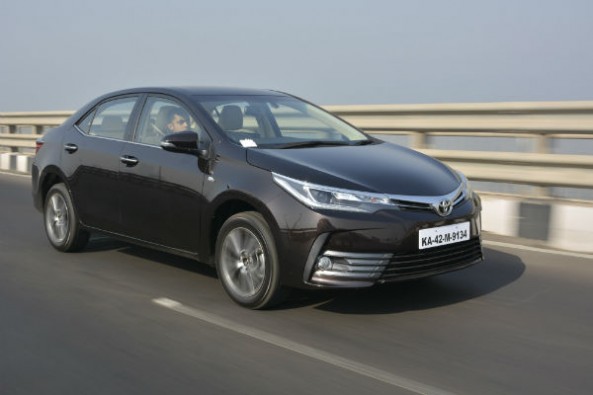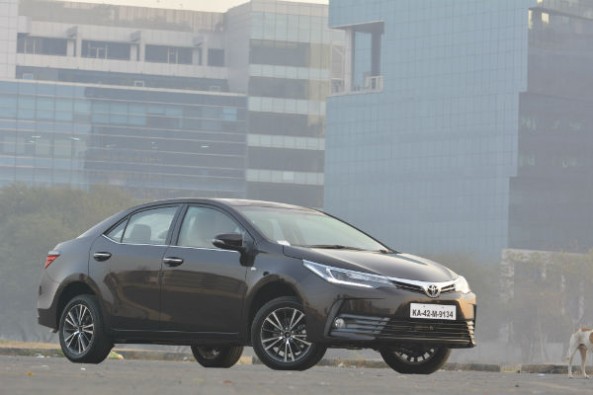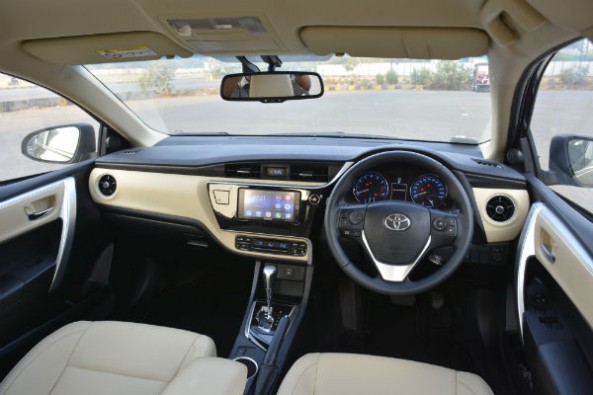Cars like the new Hyundai Elantra and the Skoda Octavia provide fierce competition to the Altis. Toyota has given the Altis a light nip and tuck to make it a better proposition.
On the outside
The changes are not that extensive what so ever. The biggest change is in the car’s face: the grille, headlights and front bumper are new. Keeping in line with the design language featured on the new Fortuner, the grille is thinner and narrower, and the headlights are longer and slimmer too. There’s also less chrome in the nose, and even the shiny strip on the boot is slimmer. The profile of the car remains unchanged, and the only change round the back is differently detailed tail-lights. The headlights and tail-lights now feature LEDs. The headlights are bi-beam LEDs and do a brilliant job of lighting up the road.
On the inside
There inside doesn’t look starkly different either. While the general layout of the dash is unchanged, the central console’s design has been altered slightly, more soft-touch surfaces introduced, some materials improved. There’ a new touchscreen infotainment system with a larger screen and the air-con controls have been changed entirely, replacing the traditional button-and-rotary-controller setup with a sleeker button-and-rocker setup. Other changes include new circular side aircon vents, new steering-mounted controls, and two USB ports instead of the rear 12V socket. On the whole, the cabin ambience has improved decently.
The new infotainment system is a considerable improvement over the previous one, featuring a responsive touchscreen, navigation, voice recognition and MirrorLink connectivity. The infotainment system also rates you on how economical your driving is, telling you what you could change to make your driving greener.
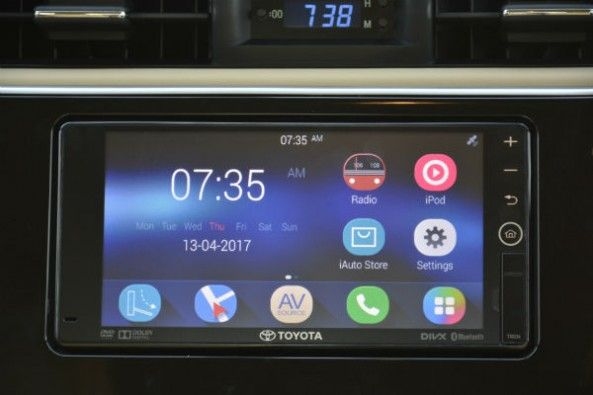
Other equipment on this top-spec VL trim includes an electrically-adjustable driver’s seat with adjustable lumbar support, cruise control, automatic headlamps and wipers, auto-dimming rear-view mirror, electrically-folding and adjustable wing mirrors that tilt down automatically when the car is slotted into reverse and a rear-view camera. The air-con unit works really well - even without rear AC blowers and with the sultry Mumbai heat outside, it does a fantastic job of cooling the cabin.
As far as equipment is concerned, the Altis now stacks up much better compared to its competition. However, it still misses out on equipment like a sunroof, two-zone climate control, ventilated seats and front parking sensors, and convenience features like one-touch lane-change indicators that are standard on cars several segments lower.
Step inside and the seats, front and back, continue to be comfortable. Legroom in the back is generous and the rear seats can be reclined, though their bucket-like contouring renders the Altis best suited for just four passengers. The rear seats can be flipped down to expand the boot’s capacity. The variant pictured here comes with seven airbags, ABS, EBD, brake assist, and vehicle stability control.
Power Torque
Mechanically, this car remains unchanged. The petrol automatic variant powered by a 1.8-litre, four-cylinder engine puts out 140hp at 6400rpm and 173Nm at 4000rpm. The engine is mated to a seven-step CVT automatic gearbox, although a six-speed manual is also available with this motor.
From behind the wheel
This engine is very refined - it is smooth and quiet at almost all times. In terms of performance, its power output is not ample, but delivery is predictable and the torque is evenly spread out. The paddle shifts are obedient to your inputs for the most part. This engine works best in the mid-range, striking a good balance between performance and refinement. The CVT gearbox also gets a sport mode and hill-start assist. However, putting it into sport mode does not alter performance much.
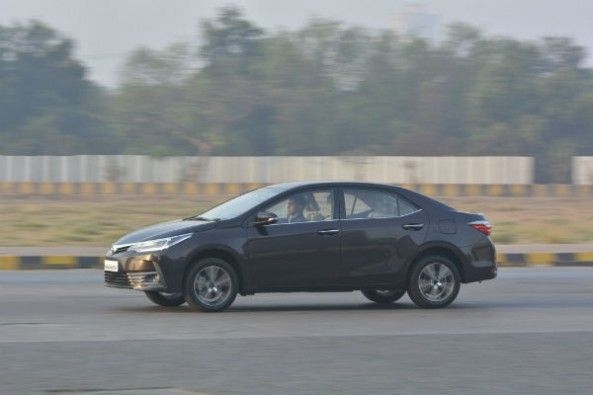
The ride quality, as before, is laudable. The long-travel suspension glides over most minor road imperfections and handles larger bumps and potholes well too. Stability is good on the wholeand through corners, the Altis feels composed and stable, allowing you to take bends at relatively high speeds. The Altis’s steering is not particularly quick or sharp, but it does win points for how safe and predictable it feels. It is light enough to handle urban driving comfortably, but not so light that it fazes the driver on the highway.
Is it worth the money?
On the whole, this is a balanced, comfortable and reliable executive sedan that puts passenger comfort and safety before all else. The refreshed design and better materials impart it with a modern, sleek look and make it feel more upmarket. If driving thrills aren’t your priority, and what you want is a no-nonsense, efficient, reliable executive sedan, the Corolla Altis is still a safe choice.
